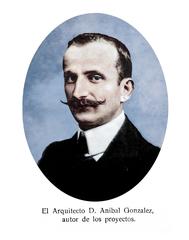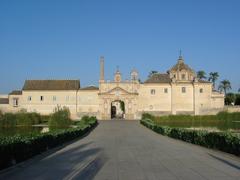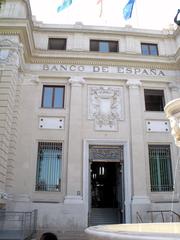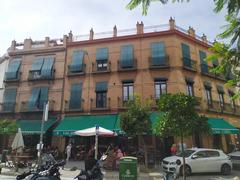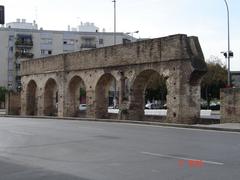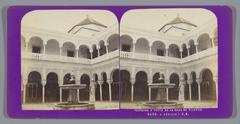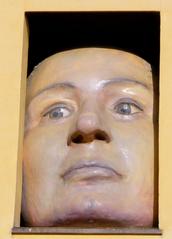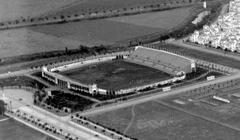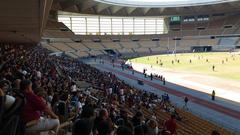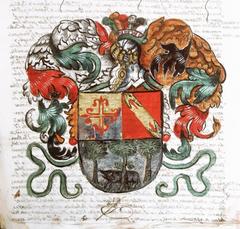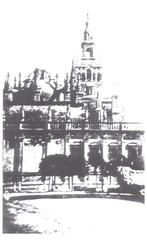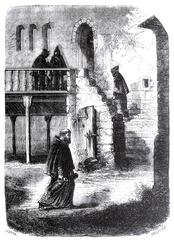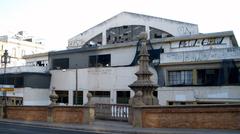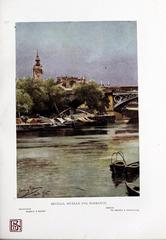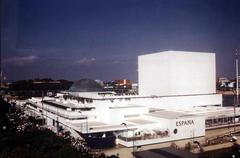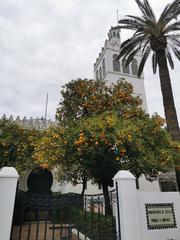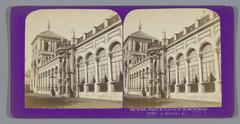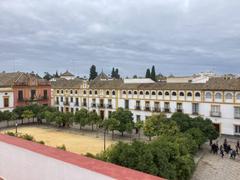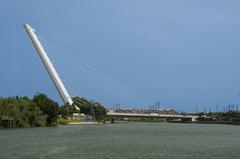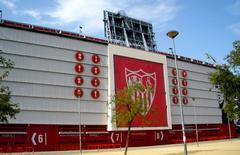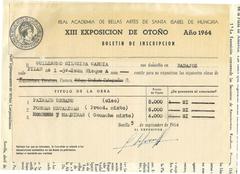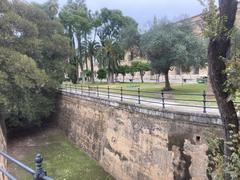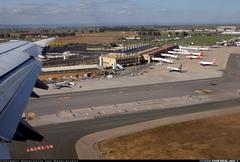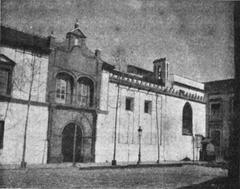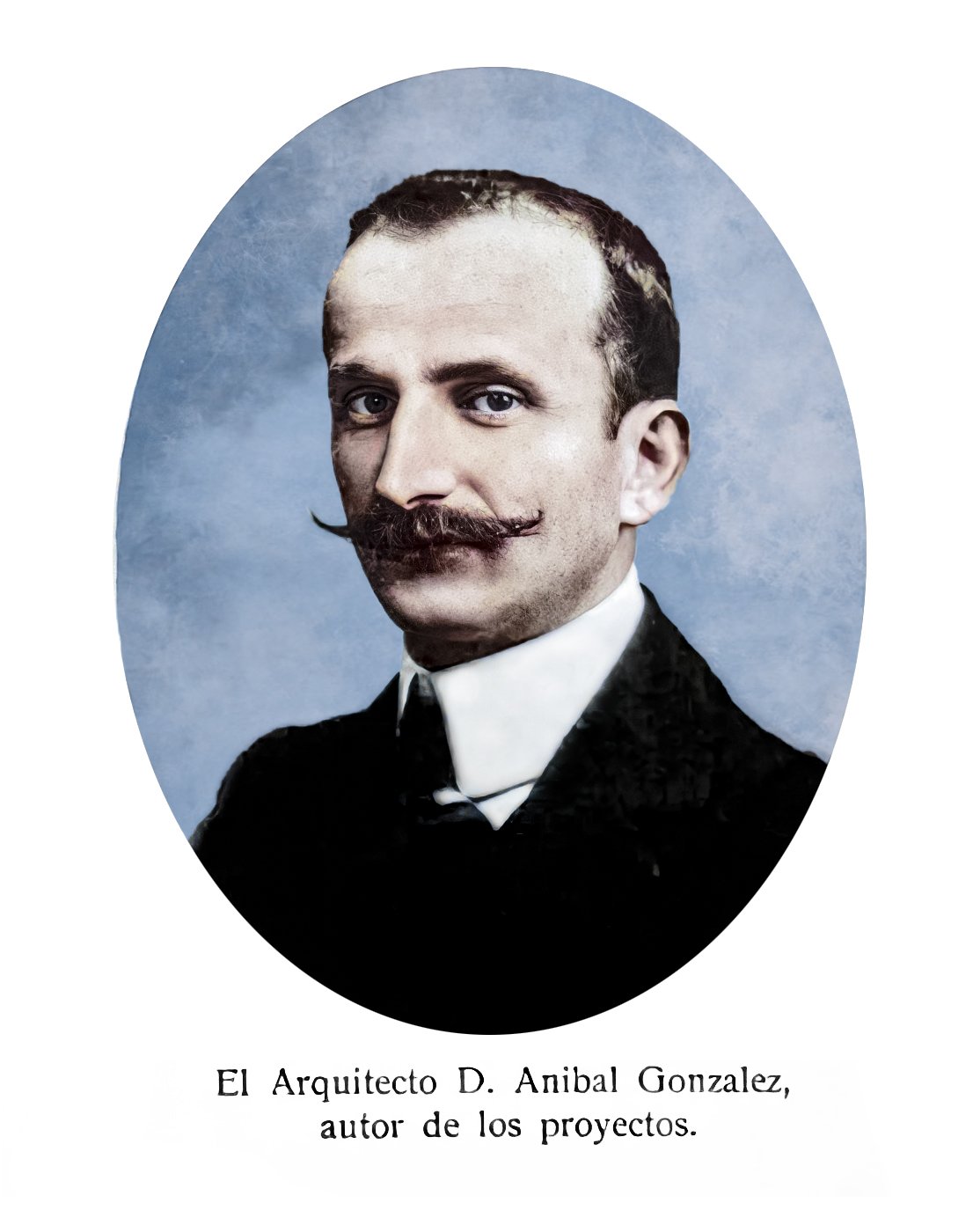
Aníbal González’s Architectural Legacy in Seville: Visiting Hours, Tickets, and Historical Sites Guide
Date: 14/06/2025
Introduction: Aníbal González and the Transformation of Seville
Seville’s architectural identity was profoundly shaped in the early 20th century by Aníbal González Álvarez-Ossorio. A pioneer of the Andalusian Regionalist movement, González’s creative synthesis of Art Deco and traditional Spanish motifs established a unique style that continues to define the city’s character. His crowning achievement, the Plaza de España, stands as the centerpiece of Seville’s urban renewal during the 1929 Ibero-American Exposition—a monumental space that harmoniously blends Neo-Mudéjar, Renaissance Revival, Baroque, and Art Deco elements. Beyond its beauty, Plaza de España and the surrounding pavilions in María Luisa Park offer visitors a living narrative of Seville’s historic evolution and cosmopolitan spirit (Wikipedia; View from the Back; visitasevilla.es).
This guide explores González’s life, his architectural legacy in Seville, essential visitor information—including visiting hours, ticketing, accessibility, and travel tips—and suggestions for making the most of these celebrated landmarks.
At a Glance: What’s Inside
- The life and career of Aníbal González
- Seville’s transformation in the early 20th century
- The 1929 Ibero-American Exposition and González’s role
- Plaza de España: architecture, symbolism, and highlights
- Visiting hours, ticket info, and accessibility
- Tips for travelers & nearby attractions
- Preservation efforts and future challenges
- FAQs, media suggestions, and further resources
Aníbal González: Architect of Andalusian Regionalism
Born in Seville in 1876, Aníbal González graduated from the Madrid Superior Technical School of Architecture in 1902. Influenced by prominent teachers like Ricardo Velázquez Bosco and Vicente Lampérez, he developed a style that evolved from Art Deco modernism to a deeply rooted regionalism, aiming to forge an architectural identity resonant with Andalusian culture (Wikipedia).
González’s approach was defined by the use of local materials, such as brick and ceramic from Triana, and by integrating historic Spanish styles—especially the Neo-Mudéjar inspired by Moorish Seville—with contemporary construction methods. This vision reached its zenith with the 1929 Exposition, when he was appointed chief architect and designed both the Plaza de España and several key pavilions in María Luisa Park (visitasevilla.es).
Seville’s Urban Renewal: The Ibero-American Exposition of 1929
At the turn of the 20th century, Seville sought to modernize its infrastructure and civic identity. The Ibero-American Exposition of 1929 provided a catalyst for transformation, resulting in the redevelopment of the city’s southern districts, the redesign of María Luisa Park by landscape architect Jean-Claude Nicolas Forestier, and the construction of over 100 new buildings (View from the Back). González’s leadership defined the architectural tone of the event, balancing tradition with innovation.
Plaza de España: Architectural Masterpiece and Symbol of Seville
Design and Symbolism
Completed in 1929, the Plaza de España is a sweeping semi-circular complex, spanning nearly 200 meters in diameter and bordered by a 515-meter canal. Four ornate bridges symbolize Spain’s ancient kingdoms—Castile, León, Aragon, and Navarre—while the central Vicente Traver fountain anchors the space (Nomads Travel Guide; View from the Back).
González’s design blends:
- Regionalism: Local brick, ceramics, and wrought iron
- Neo-Mudéjar: Horseshoe arches, intricate tilework
- Renaissance Revival: Grand colonnades, classical symmetry
- Baroque and Art Deco: Ornate facades, geometric patterns (TOMA & COE)
A standout feature is the 48 (or 49, including the Canary Islands) tiled alcoves representing each Spanish province, adorned with colorful azulejos depicting historical scenes and coats of arms (TOMA & COE; thevivalavita.com).
Cultural Highlights
- Rowboat rentals on the canal
- Spontaneous flamenco performances
- Panoramic balcony views
- Statue of Aníbal González (installed 2011) (experienciasapie.com)
Visitor Information: Hours, Tickets, and Accessibility
Opening Hours
- Plaza de España: Open daily, typically 8:00–24:00 (April–October), 8:00–22:00 (November–March). The plaza is illuminated at night but closes for security (visitasevilla.es).
- Public access: Free all day; best visited in daylight for full appreciation of details.
Ticketing
- Admission: Free entry to the Plaza de España.
- Surrounding museums: Some pavilions/museums in María Luisa Park (e.g., the Museum of Arts and Traditions, Archaeological Museum) require tickets.
Note: A €3 entry fee for the plaza may be introduced to fund conservation efforts. Check the official tourism website for the latest updates (Express).
Accessibility
- Wheelchair access: Most of the plaza and surrounding park areas are accessible; some upper balconies may not be.
- Restrooms and amenities: Available in María Luisa Park and near main entrances.
- Public transport: Nearest metro is Prado de San Sebastián; multiple bus lines serve the area.
Top Tips for Visiting
- Best times: Early morning or late afternoon for cooler weather, softer light, and fewer crowds.
- Seasonal considerations: Spring and autumn offer the most pleasant climate; summer can be very hot (Not Just a Tourist).
- Photography: Early or late in the day for dramatic lighting; bring a wide-angle lens to capture the sweeping curves and towers.
- Cultural etiquette: Tipping street performers is customary; be respectful when photographing others.
Beyond the Plaza: María Luisa Park and Additional González Works
María Luisa Park and Plaza de América
Adjacent to Plaza de España, María Luisa Park is a 100-acre green oasis filled with fountains, sculptures, and monumental pavilions designed by González (visitasevilla.es). At the park’s southern end, Plaza de América is flanked by the:
- Museum of Arts and Traditions of Seville (Pabellón Mudéjar): A Neo-Mudéjar gem
- Archaeological Museum: Renaissance Revival style (closed for renovations until 2026)
- Royal Pavilion: Gothic Revival features
Other Notable Works
- Capilla del Carmen: Neo-Mudéjar chapel at the end of Triana Bridge (Veoapartment)
- Casa del Conde de Ibarra & Casa de las Conchas: Residential showcases of González’s eclectic regionalism
- Bankinter Building & Casa del Marqués de Villamarta: Distinctive examples of urban architecture (experienciasapie.com)
Frequently Asked Questions (FAQ)
Q: What are Plaza de España’s visiting hours?
A: Open daily, typically 8:00–24:00 (April–October) and 8:00–22:00 (November–March). Best visited during daylight.
Q: Is there an entry fee?
A: Entry is currently free. A €3 fee may be introduced in the future for conservation.
Q: Are guided tours recommended?
A: Yes. Walking and bike tours offer deeper architectural and historical insights (spaininspired.com).
Q: Is the site accessible for wheelchairs?
A: Most areas are accessible; some upper levels may not be.
Q: Can I rent a boat at Plaza de España?
A: Yes, rowboat rentals are available for the canal.
Conservation and Future Challenges
With millions of annual visitors, Plaza de España faces issues like missing tiles, façade damage, and unauthorized vendors. Proposed entry fees aim to generate revenue for ongoing preservation, ensuring González’s legacy remains vibrant for future generations (Express).
Visuals and Media Suggestions
- High-quality images of the tiled alcoves, canal bridges, and panoramic plaza views (alt tags: “Plaza de España tiled alcoves” or “Plaza de España visiting hours in Seville”)
- Interactive maps of María Luisa Park and nearby attractions
- Links to virtual tours or 360° experiences
Internal Links
- [Exploring Seville’s Royal Alcázar: History and Visiting Tips]
- [Top 10 Must-See Historical Sites in Seville]
- [A Guide to Flamenco Shows in Seville]
Conclusion: Experience the Heart of Seville’s Architectural Heritage
Aníbal González’s works, especially the Plaza de España and the adjacent pavilions of María Luisa Park, are essential for understanding Seville’s unique blend of tradition and modernity. With free access, flexible visiting hours, and a wealth of cultural experiences, these sites offer something for every traveler. Plan your journey with this guide, join a tour for deeper insights, and immerse yourself in the artistic spirit that defines Seville today.
Download the Audiala app for guided audio tours and travel resources, and follow us on social media for the latest updates and inspiration.
Sources
This article references the following sources for further reading and detailed visitor information:
- Aníbal González Álvarez-Ossorio, Wikipedia
- Trip to Plaza de España, Seville, View from the Back, 2025
- Route of the Most Emblematic Buildings in Seville, visitasevilla.es
- Plaza de España Seville Tourism Charge, Express, 2025
- Plaza de España Historical Marvel, reinisfischer.com
- The Architecture of Seville, TOMA & COE, 2025
- Plaza de España Seville Guide, visitasevilla.es PDF, 2025
- Plaza de España Guide, spaininspired.com
- Pabellón Mudéjar and Museums, thevivalavita.com
- Capilla del Carmen, Veoapartment
- Experienciasapie.com
- The Orange Backpack
- Not Just a Tourist
- Holly Melody
- espanaguide.com
- en.visitarsevilla.com
- tripsavvy.com
- spaininspired.com
